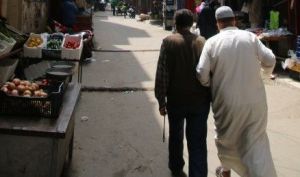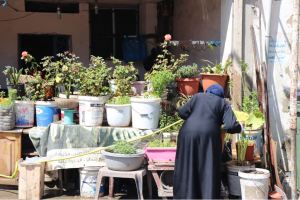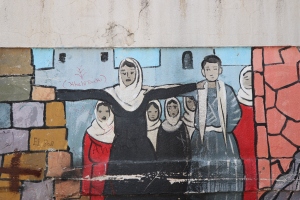Attempts to localise humanitarian responses have resulted in a growing awareness on the part of international actors of the opportunities that come from working with local faith communities (as explored on Refugee Hosts here, here and here). However, as Dr Estella Carpi of our Southern Responses to Displacement project argues, there is a need to reflect on local contexts to ensure that engagements with LFCs do not rely on essentialising practices that assume certain groups speak on behalf of a homogenous ‘locale’. This piece – which is a reposting from Refugee Hosts – speaks to the aim of our sister project to improve knowledge about local communities, and Refugee Hosts’ blog series on ‘Faith and Displacement‘, as well as the aims of their series, ‘Contextualising the Localisation of Aid Agenda’, which seeks to locate “the local” in localisation. Related recommended readings are included at the end of this piece.
This blog was posted on the 11th December, 2017.
Does Faith-Based Aid Provision always Localise Aid?
By Estella Carpi, Research Associate, Southern Responses to Displacement project.
Localisation is one of the most popular buzzwords in current humanitarian debates, describing a necessary shift in the way humanitarianism is practiced by international actors. At the same time, faith-based humanitarian assistance is often voiced as the ideal banner for the localisation of aid, bringing back spiritual solidarity and empathy to the aid process.
Academics, practitioners, and humanitarian policy-makers themselves – for instance since UNHCR’s 2012 High Commissioner’s Dialogue on Faith and Protection and its related ‘Welcoming the Stranger‘ initiative – are increasingly taking into account the social and pragmatic value of working with FBOs. Nevertheless, while re-evaluating the importance of including religious actors within the official humanitarian agenda, it is often presupposed that FBOs are ideally and naturallyplaced to respond more effectively, and that religious leaders uniquely represent their own communities, safeguarding the “most local” way of approaching crisis-stricken subjects.
This presupposition, however, may be problematic: at times, religious authorities may share the ability of international actors to misinterpret, homogenise, or approach with specific interests the needs and cultures of their own or other communities.
Besides, the debates surrounding the localisation of aid agenda are faced with two contradictions. First, religious aid providers are expected to practice a zero-tolerance policy regarding proselytism and discrimination. Second, romanticising religious leaders as natural vectors of local needs and desires will not help in any way. Localising crisis response is intrinsically valuable as long as it focuses on effective progress and the cultural comfort of the crisis-stricken. Marking a clear-cut differentiation between what is local and what is external may remain an eternal sociological challenge. With external actors enhancing local knowledge and capacities, and local actors participating in transnational governance, the inside-outside intellectual struggle becomes increasingly pointless.
As a consequence, external actors may rather gain faith literacy and contextual knowledge – of the history, language, and cultures of the place in which they work – rather than merely recruiting local staff (while preserving the latter’s low pay-scales and overburdening them with political responsibilities in some cases).
Likewise, to localise humanitarian efforts on the whole, the religiousness and/or spirituality of people who can benefit from these services should be taken into much greater account. Thus, localising means neither presupposing – or over-emphasising – the socio-emotional proximity of displaced populations to the local church or mosque, nor institutionalising all local forms of support; nor does it mean imagining local religious authorities as being best placed to ensure successful aid provision, regardless of contextual specificities.
In this vein, at the ‘Localising Response to Humanitarian Need‘ Forum organised by Refugee Hosts’ project partner, the Joint Learning Initiative on Faith and Local Communities, and convened in Colombo (Sri Lanka) in October 2017, Judge Mohammad Abu Zeid, the President of Saida Islamic Sunni Court (Lebanon) and the Adyan Foundation, and Sheikh Arkam Nouramith from Matara Jumma Masjid (Sri Lanka), pointed out that it was important for religious leaders engaging in humanitarian and development work not to represent their own country, or their faith-based community. Doing so inevitably leads to exclusion/inclusion processes among beneficiaries themselves. They stressed that the good that a religious leader can do becomes amplified if they can represent only a community within the community, therefore re-consigning internal diversity to national faith-based communities.
As highlighted through the focus of Refugee Hosts’ new blog series, what we need at this point is a far more nuanced understanding of what ‘localisation’ means. In turn, articulated understandings can only stem from local narratives of provision, which can unearth diverse motivations, principles, and desired effects as shaped by local cultures.
Experts have highlighted how, in the framework of the localisation of aid, some segments of the international community have ‘reduced’ religion to culture by ignoring or undercutting the economic, political and social role of faith-based humanitarian action in emergency response, and how this can have an impact on localisation efforts.
In other words, refugees or members of local vulnerable communities are individuals who may be religious, but also not only religious. A refugee who regularly attends a church or mosque does not necessarily identify themselves with the label ‘local faith community member’, as current humanitarian language tends to capture them. To localise the understanding of crisis, aid provision and distribution, it is necessary to understand where the localisation potential actually lies.
At this point, I would replace the a priori ideal of localisation with the one of ‘contextualisation‘. The level of ‘local-ness’ or ‘foreign-ness’ in assistance provision only contextually matters and, moreover, it is never fully distinguishable. Contextualisation, to me, better conveys the humanitarian aim of guaranteeing tangible positive results in everyday lives.
In this sense, I would argue that part of the existing literature has over-emphasised positive experiences with faith-based aid provision not because faith-based responses were informed by an appropriate understanding of the dynamics of the emergency but rather because they were religious.
By the way of conclusion, with these thoughts I am not suggesting that faith-based aid provision should be left outside the formal coordination system, which, unfortunately, is still happening. Instead, I suggest that advocacy efforts relating to the localisation of aid must be more contextualised. Involving local and religious actors should become neither a quick recipe for success nor a standardised strategy of action that separates out the local from the international, the religious from the secular.
This is the reason why promoting contextualisation is one of the biggest challenges that the humanitarian system can pose to itself nowadays: it would involve challenging the historical legacy of nation-states, and the enduring binary of local versus global, religious versus secular. At times, separation lines will betray contextual realities; at other times they will importantly reflect them.
For further information on faith based humanitarianism read our blogs on:
Faith-based Humanitarianism: This post examines how local faith communities respond to populations affected by conflict and displacement. In our second introductory mini blog Dr Elena Fiddian-Qasmiyeh provides a brief overview of how local faith communities are often the first and longest standing responders to displaced populations.
And click here for the Refugee Hosts Faith and Displacement series, here for other contributions to our Refugee Hosts ‘Contextualising the Localisation of Aid’ blog series, or below to access the following recommended readings:
Ager, J., Fiddian-Qasmiyeh, E. and Ager, A. (2015) ‘Local Faith Communities and the Promotion of Resilience in Contexts of Humanitarian Crisis’, Journal of Refugee Studies, 28(2): 202-221. *Open access until July 2018*
Carpi, E. (2017) “Syrians in Akkar: Refugees or Neighbours?”
Fiddian-Qasmiyeh, E. (2017) “Gender, Religion and Humanitarian Responses to Refugees”
Kidwai, S. and Fiddian-Qasmiyeh, E. (2017) “Seeking Evidence to Provide Protection: How Can Local Faith Communities Support Refugees?
Rowlands, A. (2017) ‘Hannah Arendt: On Displacement and Political Judgement’
Svoboda, E. (2018) ‘Humanitarian Access and the Role of Local Organisations’
Trotta, S. (2017) “Faith-Based Humanitarian Corridors to Italy: A Safe and Legal Route to Refuge”
Zbeidy, D. (2017) “Widowhood, Displacement and Friendship in Jordan”
Featured Photo: Masjid al-Quds Mosque in Baddawi camp, Lebanon (c) E. Fiddian-Qasmiyeh, 2016.


